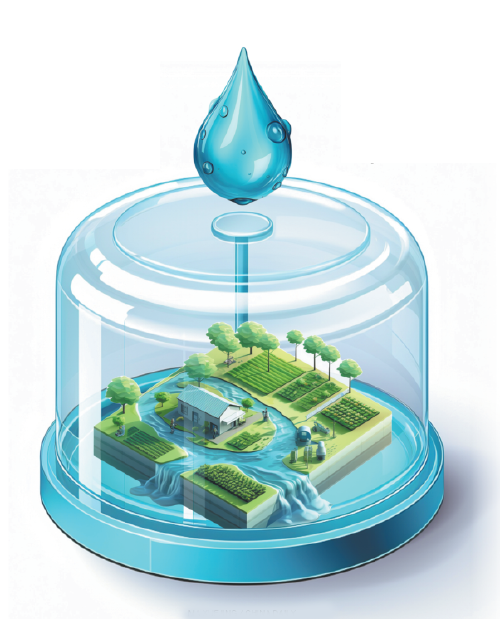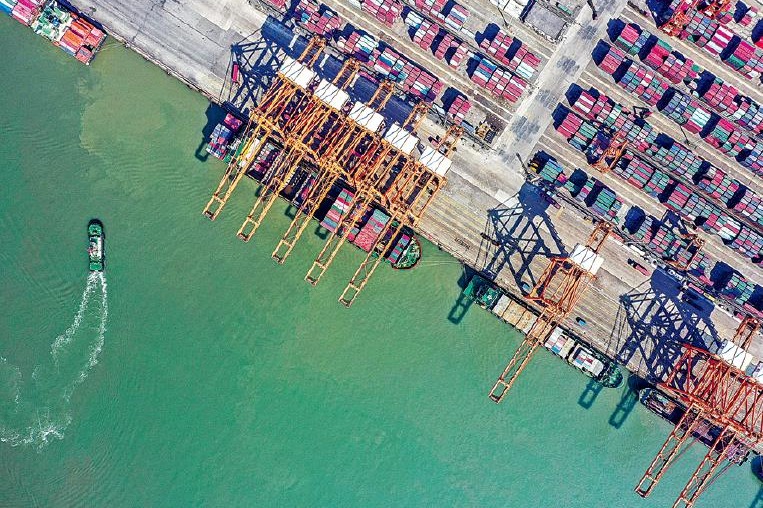Watertight cooperation between China and Central Asia vital
The problems of effective water management in the two sides must be solved jointly as they are remarkably similar and shared

The problems of effective water management in the two sides must be solved jointly as they are remarkably similar and shared

It is no exaggeration to say that most of the current impacts of climate change are being felt primarily due to the water crises. Almost every day, newspapers over the world are dominated by reports of natural calamities related to water. On the one hand, humanity feels its impact through devastating rainstorms, destructive floods, rising ocean levels and shrinking glaciers, and on the other hand, we are seeing large-scale forest fires and disastrous droughts.
The rapid increase of the world's population, neglect of water management, and the predatory attitude to water in economic activity make water more scarce and more polluted. Experts at McKinsey have said that by 2030 water demand will exceed supply by 40 percent and that half of the world's population will live in water-scarce areas.
As in many other areas of sustainable development, the fight against climate change must transcend national boundaries. Balancing the water needs of people, industry, agriculture and ecosystems will require a multinational approach. That is why finding a comprehensive solution to the water problem in our region requires the joint efforts of neighboring Central Asia and China.
Reflecting these concerns, the China-Central Asia Xi'an Summit Declaration in May clearly defined the following goals. The parties will intensify their efforts in the development of smart agriculture, and the exchange of experience in the implementation of water-saving, green and other highly efficient technologies and best practices in this area.
The parties agreed to increase the exchange of technologies and specialists in the amelioration of arid, saline and saline soils, water-saving irrigation, pest control, animal husbandry and veterinary medicine, and to strengthen the stress resistance of the agricultural sector with a view to its sustainable development.
It is clear that Central Asia's water supply has been exhausted. A vivid example is the tragedy of the Aral Sea. The Amu Darya no longer flows into it, and the Syr Darya hardly reaches the dying sea. Carelessly and poorly organized, their waters are almost entirely taken up for irrigation. Today, the surface area of the Aral Sea is less than 10 percent of the site in 1960.
Because of its geography, most of the cultivated land in Central Asia needs and is subject to artificial irrigation. In the Kyrgyz Republic, 75 percent of cultivated land is irrigated, in Tajikistan 84 percent, in Uzbekistan 89 percent and in Turkmenistan 100 percent of cultivated land requires artificial irrigation. But this is where most of the water is lost, as more than half of the water taken for irrigation evaporates and seeps into the reclamation systems, not reaching the fields. For the Aral Sea basin, the volume of such losses is estimated at 30 to 40 cubic kilometers per year.
Over half of Central Asia's population lives in rural areas. The rural population ranges from about half of the total in Kazakhstan and Turkmenistan to two-thirds in Tajikistan and the Kyrgyz Republic. Agriculture employs nearly half of the Central Asian workforce.
Glaciers play a prominent role in the water cycle in Central Asia. But, due to climate change, the glaciers are experiencing significant losses in mass and area. Glaciers along the Tien Shan (known as Tianshan Mountains in China), Central Asia's most extensive mountain range, have lost 27 percent of their mass and 18 percent of their area over the past 50 years. An international research team has calculated that almost 3,000 square kilometers of glaciers and an average of 5.4 gigatons of ice per year have been lost since the 1960s.
The authors estimated that by the 2050s, about half of the Tien Shan glaciers could be depleted.
Similar adverse natural phenomena are occurring in neighboring China. According to a study by the International Center for Integrated Mountain Development, from 2011 to 2022, glaciers in the Himalayas melted by 65 percent more than a decade earlier. Himalayan glaciers could lose 80 percent of their volume if global warming continues. The melting of glaciers in the area is threatening the existence of 2 billion people living in the territories where the rivers flow. As water plays a massive role in energy transition, water scarcity could prevent countries from moving toward zero carbon emissions.
Last year was China's hottest and driest year in six decades, causing the Yangtze River water level to drop, limiting its irrigation and hydroelectric generation capacity. The drought in recent years could push China into a severe water crisis and have a significant impact on the country's electricity and agricultural production.
Considering that the problems of effective water management in China and the countries in Central Asia are remarkably similar, it is joint scientific and technological efforts that will allow the parties to achieve much-needed progress in this critical segment of sustainable development. Stabilizing the glaciers and providing the population with drinking water and irrigation will require the systematic work of scientists and practitioners from all countries involved in the use of water-saving, "green", and other highly efficient technologies in the Himalayas, Pamirs, Tien Shan and other regional mountain systems.
Cooperation between countries in water management is already taking place. For example, in April 2011, China and Kazakhstan launched a joint project to divert water from the Khorgos River. More recently, China has built reservoirs and canals to help Kyrgyz farmers irrigate land in the Issyk-Kul region of the Kyrgyz Republic. After adopting the most important political document at the highest level, one should expect an increase in the intensity and quality of cooperation both in this direction and in all other areas of joint sustainable development.
Sustainable water management will help people adapt to climate change by building resilience, protecting health and preserving nature. With efficient water flow management and adequate sanitation, climate change will be mitigated, ecosystems will be saved, and carbon emissions will be reduced. Climate policymakers must put water at the center of their action plans.
The author is former prime minister of the Kyrgyz Republic and a distinguished professor at the Belt and Road School at Beijing Normal University. The author contributed this article to China Watch, a think tank powered by China Daily.
Contact the editor at [email protected].

































